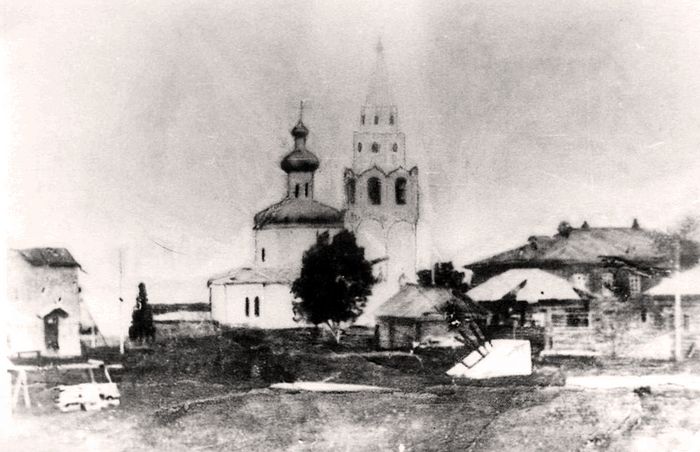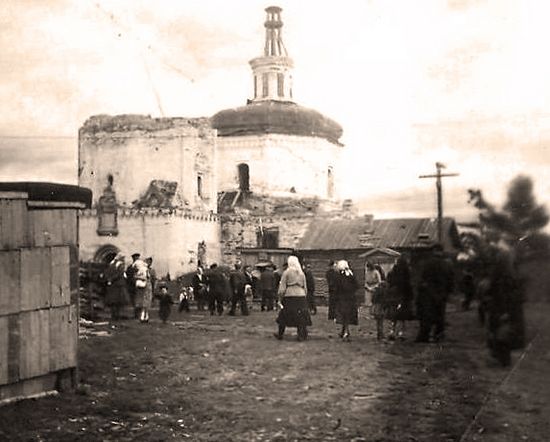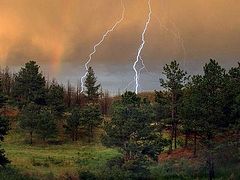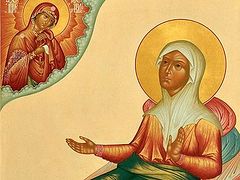This article by Svetlana Polivanova, a regular author for Pravoslavie.ru, on the Kondinskoe-Holy Trinity Monastery was sent to the editors of the site in March, but it was decided to time its publication to the patronal feast of the monastery—Pentecost. And in May, we found out that Svetlana—a journalist, historian, a researcher of the fate of Orthodoxy and the ascetics of God in Ugra, an honored cultural figure of Ugra, teacher, and public figure—reposed. We offer our condolences to her family and friends and colleagues, and we ask our readers to pray for the newly-reposed handmaiden of God, Svetlana.
In June 1918, the ship “Red Star” approached the footbridge to the Kondinskoe Monastery, bringing a detachment of Red Guards. For two days, there were fervent debates in the monastery about whether the new authorities had the right to seize the convent’s property. Two days later, the squad commander P. I. Peisel, in the presence of his assistant P. G. Chemagin and thirty Red Guards, announced the nationalization of the monastery’s possessions to the villagers.
The commander was immediately joined by political exiles—“the poor.” “Our hour has come…” said those who often found themselves in poverty due to their negligence and laziness, rubbing their hands together. “We will tear the old world down to the ground.” “We will build a beautiful, happy, free society on earth.” How far these illusions were from real life, time would tell. In the meantime, proximity to the new authorities required loyalty. The elderly resident of Oktyarbrskoe A. V. Kalachev told me in the words of his mother, who came from a religious family, that it was these poor who plundered and closed first the Holy Trinity-Kondinskoe Monastery in 1923, and then the Church of the Life-Giving Trinity in 1930, at the instigation of the communists.
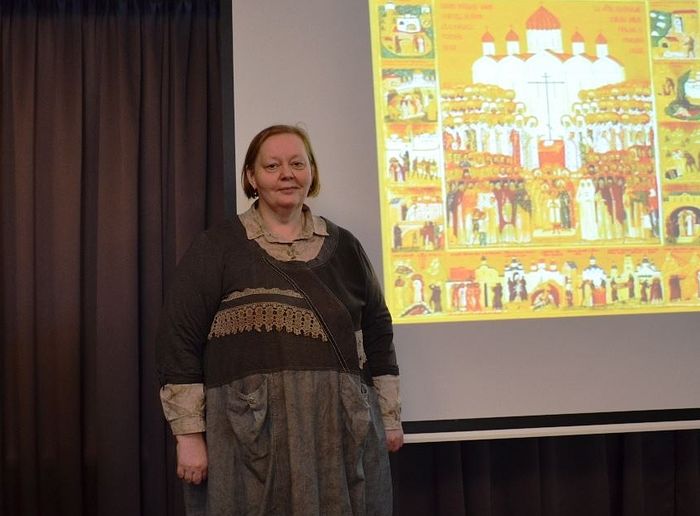 Svetlana Polivanova
Svetlana Polivanova
“Here is a danger of another kind”
The Kondinskoe Monastery is the first in the Ob North. It was founded in the seventeenth century by petition of the Alachev Ostyak1 princes. As one poem by Galina Illarionovna Makarova, a native of these places, says about the time of the creation of the monastery, “Russia has discovered Siberia,” and therefore, the establishment of Orthodoxy was a matter of political importance for the state. In the inventory of Church property compiled in 1923, it is recorded that one of the bells was given to the monastery by the older brother of Peter I—Theodore Alexeevich. For several centuries, its toll announced the presence of Orthodoxy in these remote taiga areas.
As Olga Spiridonova, a consultant of the Ugra Archive Service, notes in her publication, in the seventeenth century, the monastery received land “for three versts2 around” and had a large farm: a forge, four mills, and a malt house. The monks extracted iron ore and mica, manufactured windows, butter, hempseed oil, and candles, they baked bread themselves, raised fish, and kept livestock. The Kondinskoe monastery was considered prosperous, owning 775 peasants.
Difficult times came for the monastery after Catherine’s decree on the secularization of Church estates. In the late-nineteenth century, it was transformed from a male to a female monastery. Nuns from the Tobolsk-St. John-Entrance of the Theotokos Monastery were sent there. And as happens, the women immediately put things in order: They restored the iconostasis, painted the walls of the churches, and started teaching the local children to read and write.
 Nuns of the Kondinskoe Monastery
Nuns of the Kondinskoe Monastery
But the tragic twentieth century was already on the threshold. The proximity of the change was clearly felt by many of those living at that time. But whoever was able to “see” ahead prophesied not only about the sorrows the Church would endure, but also about the spirit of its renewal and purification. Did the nuns, who at the end of the nineteenth century went to bear obedience in a monastery lost in the taiga backwoods, know what soon awaited them in this new place? It recalls the letters of the Hieromartyr German (Ryashentsev) that he sent to his spiritual children from exile in the early 1920s, from the village of Samarovo (now Khanty-Mansiysk), which talk about the moral atmosphere that reigned in those years in Siberia:
“Here is a danger of another kind: everything all around … is very crude and primitive now, living and attuned in a completely pagan way.”
But the monastery gradually united the most spiritually healthy forces of society around itself. “The people are made up of saints, not a crowd of people,” St. John Chrysostom said, succinctly defining this process. Unfortunately, little evidence of the life of the nuns of Kondinskoe Monastery after the revolution has survived. According to a few unverified sources, when the community was dissolved, the abbess, Mother Seraphima, was arrested and sent to Tobolsk under guard.
Collecting material about the elderly residents of Repolovo in the Khanty-Mansiysk District who were shot for resisting the closure of the church in their village, a descendant of those elders, Valentina Mikhailovna Provotorova, remembered one Martha Andreevna Plastinina, a former nun of the closed Kondinskoe Monastery. Before the revolution, Martha had a fiancé, but he died in the Japanese War. She took it as the providence of God (one can only marvel at the integrity of the nature of such people) and left for the monastery. After it was closed, she returned to her native village. The Plastinin name was known in these parts, as the Plastinin brothers owned a soap factory there before the revolution.
Valentina’s childhood memories date to the middle of the previous century. Martha would read the Bible to the neighbor kids, including Valya. “Why don’t other people say anything,” the girls would ask with surprise, having discovered the world of Orthodoxy for themselves. “I’m alone, and one person isn’t a big deal. I have no one to fear for,” was the reply. Young Valya would always remember the old woman’s last piercing glance when she was taken to the home for the disabled.
“They sang ‘The Internationale’ in chorus”
They finally closed Holy Trinity Church in 1930. Maria Sergeevna Kalagurova’s memoirs about those times, given to me by the director of the Oktyarbrskoe Ethnography Museum Elena Viktorovna Tolstosheina, have been preserved. Maria remembers how six large bells and a gilded cross were thrown to the ground; how they spent weeks knocking these crosses out of the domes; how icons were torn from the iconostasis; silk and satin banners and Church books were torn apart; then all of it was gathered in the monastery courtyard and mercilessly trampled under dirty boots.
A. V. Kalachev recalls stories from her mother, who was very grieved seeing the desecration of the sacred treasures. Their family lived next to the church, and when they burned the Church utensils, icons, and liturgical books, they tried to save at least something from the fire. Thus, their family saved one of the icons that was later returned to the restored monastery.
By the way, another icon—the Hodigitria Mother of God—from the ruined church is kept today in the Oktyarbrskoe Ethnography Museum, where it was transferred in 1997 by the local woman Tatiana Ivanovna Filatova, who discovered it in the attic of a house she recently bought. The icon was restored over the course of four years in Moscow. And now it reminds visitors to the museum about our tragic past.
Documents preserved in the Ugra Archive testify about it.
“On February 14, 1930, there was a general meeting of the Kondinskoe Village Council,” says Olga Spiridonova, a consultant of the Ugra Archive Service. “There was only one issue on the agenda—the closing of the church. We read:
‘The Church is the oppression of the working masses, an agent of class enemies. The Church must close and be turned into a community hall immediately. Its assets should be transferred to the industrialization fund.’”
There were 130 people at the meeting. The document especially emphasizes that they all sang “The Internationale”3 in chorus.
But it wasn’t so easy to close the Holy Trinity Church. No information has survived about what actually happened. But the archive has the response of the higher body—the Ural Province Executive Committee of the Council of RK and KD—from March 10, 1931, which prescribes that the Tobolsk Province Executive Committee immediately transfer the closed church in the village of Kondinskoe in the Berezovsky District for the use of the faithful. We can assume that the answer came as a written appeal from the same group of believers who tried to resist the illegal closure of the church.
“There is no evidence of whether the faithful were permitted to use the Trinity Church again,” says the Archive Service employee. “Until 1937, the church building was listed as a club, and was then transferred to the State Fisheries Trust as a refrigerator in exchange for a room of equal value to the club.
In 1941, the Omsk Provincial Council of Workers approved the decision of the Executive Committee Mikoyan District Council to dismantle the prayer building in the village of Kondinskoe, using its bricks to build necessary facilities.
Here begins a story like hundreds of others about how difficult it was to disassemble the church for “construction needs.” After at all, they’d spent a century building it, and a church, as the house of God on earth, lived by its own, unearthly laws. Another elder of the village, Vasily Krolik, remembers that the locals took the church apart by hand, usually for personal economic needs, and then began to pave Lenin Street with the bricks.
But the church did not easily give up the Heavenly to the earthly. Andrei Kalachev says that before the war, an entire expedition came with a special tool. They lowered the gutters down from the top and dropped the bricks down through them. “One brick weighed seventeen pounds,” recalls the old man about those times. Then these bricks were taken away on a barge, and the half-destroyed church building was given to a correctional labor camp, and later a kerosene shop was set up there. In 1957, a power plant was launched in Oktyabrskoe, and there was no longer a need for the shop. Then the church was used for film storage. As the older residents recall, two altars of the Holy Trinity Church and the bell tower were dismantled in the 1950s. Only one altar was preserved—that of St. Nicholas the Wonderworker.
An eloquent fact: Secular institutions were built on the site of the monastery two times in the soviet years, and both times the buildings were destroyed in a fire. The God-fearing villagers whispered: “The Lord is clearly showing that it wasn’t pleasing to Him to put secular organizations on the territory of the monastery…”
In the 1960s, the premises came under the ownership of communications officers who added a two-story wooden building to the church. In those years, there was no longer any paint on the walls of the church; only in the upper part of the octagon could be seen, as it appears in the memoirs, “an eye painted on the wall.”
A monument of Siberian Baroque
At the very beginning of the 1990s, Galina Illiarionovna Makarova, well known in these parts, thought about creating an ethnography museum. How symbolic it all is… Perestroika with its destructive changes had just died out, and it was necessary to start creating a new life. But Galina began it with the return of the past, and firstly with the history of Holy Trinity Monastery, which was especially close to her parents—the last couple married within the walls of the monastery.
In his essay on the history of the Kondinskoe Monastery, the historian and regional specialist Gennady Nikolaevich Timofeev wrote about this event with the words of Galina Illarionovna and her mother:
The last service in the monastery church was held on October 11, 1929—the marriage of Maria Sergeevna Chuprova to the hereditary monastery peasant Illarion Bartholomew Kalagurov. The wedding was held in the winter cathedral, and the memory remains of the blissful glow of green, white, and gold… huge icons of the Mother of God, St. Nicholas the Wonderworker, and a whole number of icons that bordered a large portrait (life-size) of Metropolitan Philothei (Leschinsky) of Tobolsk. The last service was celebrated by Fr. Jacob…
This essay is kept today in the Oktyabrskoe Ethnography Museum, founded by Galina Illarionovna, who carefully preserved not only family traditions, but also the history of her native land for posterity.
Collecting historical materials, Galina found photographs of the monastery from 1896 and drafted its layout, on the basis of which the local artist Y. A. Privalov made a model of the monastery. Thus the monastery gradually returned from oblivion. The first restorers arrived to Oktyarbrskoe in 1994 from Leningrad and Nizhny Novgorod, but it took nearly another two decades for the monastery’s bells to sound forth over the taiga again.
On February 19, 2020, the regional television station, Ugra, aired a show dedicated to the history of Holy Trinity Monastery by the journalist Paul Inkov. Filming was underway for several years, showing the gradual revival of the monastery, how the inhabitants of Otkyarbrskoe “raised” the monastery with their prayers, and how they labored to beautify the place with their unquestionable faith in its restoration.
The TV journalist called the monastery a monument of Siberian Baroque, which has a close connection with religious buildings of pre-Petrine times.
Another interesting detail: They began to restore the monastery when the territory of Ugra was part of the Tobolsk-Tyumen Diocese, and then the work continued within the Khanty-Mansi Diocese, which eventually grew into a metropolia (headed by Metropolitan Pavel [Fokin]); now the monastery is the Holy Trinity Episcopal Representation of the Diocese of Ugra and Nyagan, newly-established within the metropolia. The monastic life is gradually reviving in the monastery today, and the monastery has an active iconography workshop. Abbot Alypy (Knyazev) headed the Tobolsk School of Iconography for many years, so the opening of such a workshop at the monastery is quite logical.
As before, the revived monastery towers above the centuries-old taiga, calling people to prayer and repentance with the tolling of its bells.
“May it be a monument, not subject to the ages,” wrote Galina Illarionovna Makarova even before the rebirth of the monastery, sensing her deep involvement in the Orthodox history of her people. “May it be a holy place forever.”
1 An indigenous Yugrian people, living in what is known today as the Khanty-Mansi Autonomous Okrug in central Russia—Trans.
2 Two miles—Trans.
3 A left-wing anthem—Trans.

